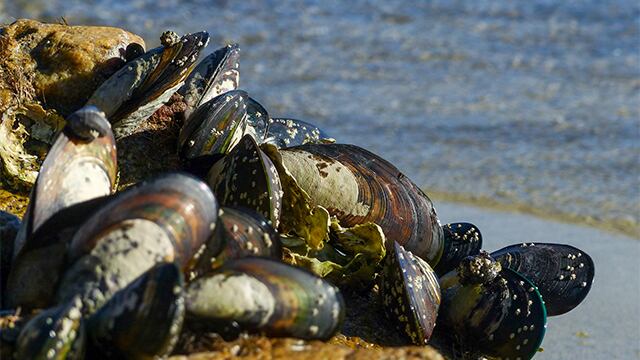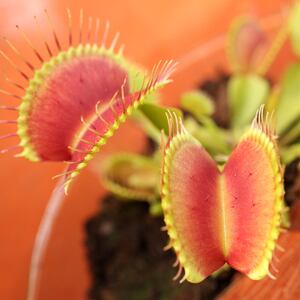Mussels are nature’s Gorilla Glue. These tasty shellfish, found in both fresh and saltwater, anchor themselves to rocks using sticky threads of liquid protein. The key ingredients of this quick-setting natural cement are called mussel adhesive proteins, or MAPs for short.
For years, scientists have been investigating MAPs to make their own synthetic glues inspired by mussel adhesives. Artificially emulating millions of years of evolution in the lab has proven challenging. But Northwestern University researchers have now found a way to bypass nature’s R&D by recreating not MAPs themselves, but rearranging their chemical structure. New materials built from these structures exhibit the same kind of tough adhesion as the MAPs themselves, but are much, much easier to derive.
As a result, it may be possible to develop an ultra-strong, ultra-flexible adhesive without having to make it entirely from scratch. It could be used to create durable wound adhesives, improve drug delivery, or play a role in other human health applications.
ADVERTISEMENT
In a study published Thursday in the Journal of the American Chemical Society, the Northwestern team show how it created its new synthetic adhesive by hitting on a breakthrough involving something called tandem repeat proteins (TRPs)—long chains of amino acids that repeat over and over again that help build larger proteins like MAPs.
Typically, the structure and function of a protein is determined by its amino acid chain. Chemical interactions influence how the chain folds itself, like how the notches in a Lego dictate the other pieces it can connect with and what shapes it can make.
For scientists, copying this manufacturing process is easier said than done, Northwestern biochemist and study co-author Nathan Gianneschi told The Daily Beast. “For the last few decades, people have tried to make mimics of spider silk. But proteins like this are hard to mimic partly because of their size—they need to be a certain molecular weight, they need to have this [repeating sequence] in order to have their properties,” he said.
Gianneschi said the eureka moment came when his team decided to think outside the box: What if instead of replicating a large protein, he and his colleagues isolated its TRPs—the chemical component responsible for adhesive properties—linked them together into a manageable single-file chain, and molded their shape into the final protein they desired?
“My post-doc [Or Berger] said he was going to do it and I said it’s not going to work, but he did it anyway,” Gianneschi laughed.
The final result is a structure with a synthetic backbone and sticky TRPs attached along the sides—akin to a molecular cleaning brush. The researchers tested the strength of this new synthetic glue against native MAPs, applying a single layer to multiple glass plates, and applying a layer of cells from three different cell lines onto the plates, and then washing them.
Much to Gianneschi and his team’s surprise, the pieces of glass that still had cells attached after washing were ones with the synthetic glue, outperforming a mussel’s own adhesive proteins.
There is still much about this new compound yet to be discovered, like how it would work under high temperatures or in environments where the pH can range widely, which could influence its effectiveness as potential underwater adhesive. Gianneschi’s group plans to continue studying their new material to see how it fares under different conditions, and are eager to see its future use in the biomedical field.
“One of the areas of real interest where we know that it functions is, for example, in the kinds of amino acids that are generally present and known to stick to biological tissues,” he said. “One of the thoughts is that maybe you could use [this synthetic glue] to stick molecules to tissue or stick them to signs of injury to deliver antibiotics.”
The possibilities for this synthetic adhesive are endless, and put a whole new spin on glue as just for crafts.







